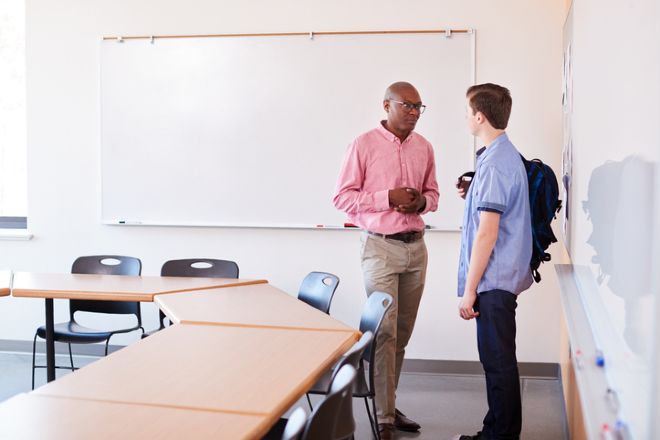The FBI found that in 92 percent of school shootings, classmates were aware of the potential for violence, but were reluctant to tell anyone.
Because the events are so rare, the U.S. Secret Service and Department of Education have not been able to develop a profile of perpetrators, even after extensive research. Instead, these agencies urge schools to be aware of community members’ behaviors. Attackers sometimes “tell fellow students [or] siblings of their intent. They often post on social media,” said Veazie. “There are indications, signals through the noise that tell us that something may be happening, that something is simply not right.” The FBI found that in 92 percent of school shootings, classmates were aware of the potential for violence, but were reluctant to tell anyone. Perpetrators will plan, probe and test possibilities, which the school community should watch for and take seriously.
Independent schools have a “distinct advantage,” stated Veazie: “You know your communities so incredibly well. This is something you have to try to leverage to the greatest extent possible.” He underscored that schools should not stigmatize mental illness because it is not synonymous with acts of violence.
As for preparing campus facilities, Richard Swengros, another Kiernan executive, outlined some best practices, which include improving opportunities for surveillance around natural access points by increasing lighting and using low and see-through fencing. He also suggested using hedging, thorny bushes and other landscaping measures around campus perimeters to channel visitors to a limited number of access points.
The average time for law enforcement to arrive at school following an emergency is six to eight minutes, explained CEO Kathleen Kiernan, so schools need to plan what they will do in that time. “The most important thing to remember here is law enforcement is there initially to eliminate or neutralize the threat, not to render aide or start an evacuation procedure,” said Kiernan.
She outlined four steps of a preparedness and resiliency cycle that guides all of KGH’s work.
- Awareness of personnel and environment
- Preparedness and ability to make rapid, informed decisions
- Response and execution of practiced plans
- Recovery
Kiernan also urged administrators to listen to students, who have a different perspective on not only their peers’ behavior but also physical security. She cited one school where administrators invested in new door-locking technology to improve security, but students quickly figured out how to bypass it using a ruler or pencil.
Veazie, Swengros and Kiernan also discussed emergency action planning and threat assessment teams; physical security assessments, preparedness reviews and security technology; recovery plans and more. Watch the webinar, download slides and read the transcript in NBOA’s webinar archive.



